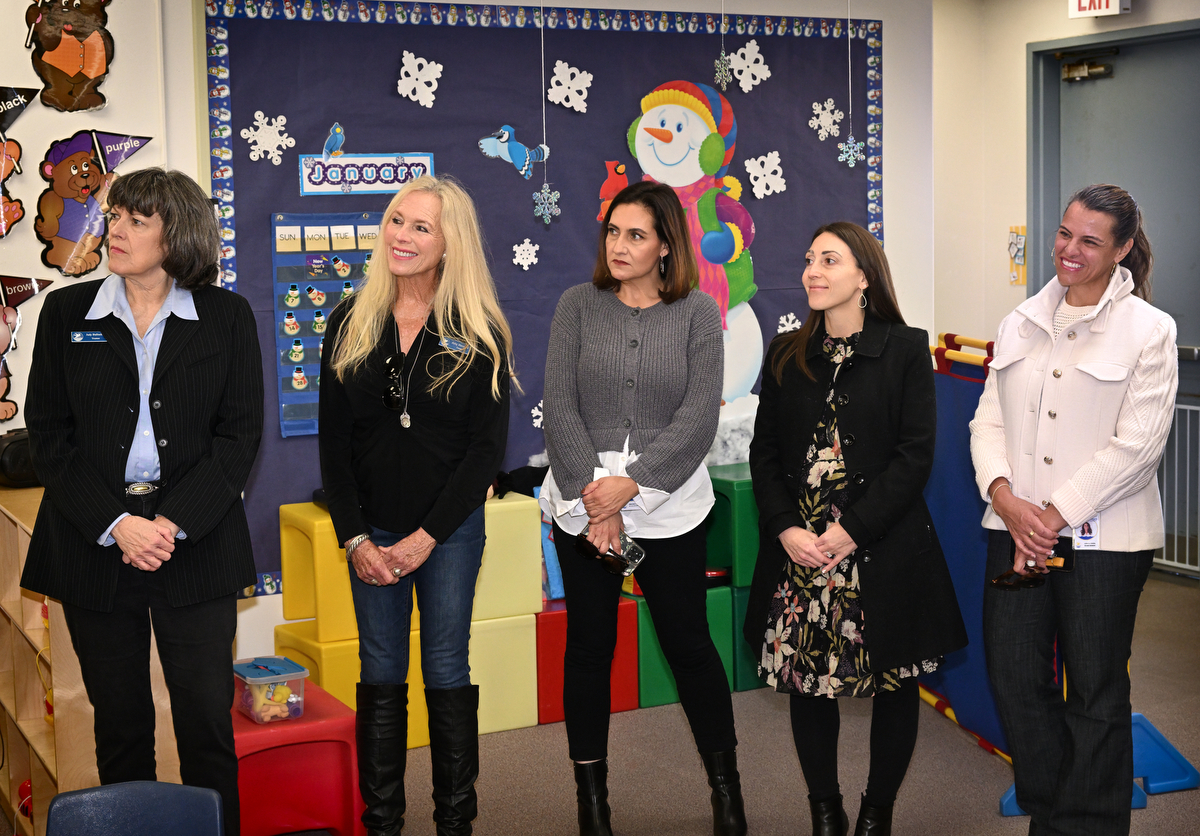By Greg Mellen
In 1971, the State Board of Education authorized funds to open an experimental preschool for handicapped children and — in a groundbreaking move — chose the relatively young Capistrano Unified School District to run the program.
The Exceptional Needs Facility, which found a permanent home in 1975 next door to RH Dana Elementary, continues to reach toward new horizons in special education for preschoolers, albeit under a new name.
Recently rechristened, renovated, and reimagined, the Early Childhood Center was officially unveiled to a gathering of about 50 officials, trustees, and teachers from the Capistrano Unified School District.
“We had the first school of its kind,” said Early Childhood Center Principal Jonathan Ellis of the renamed facility. “We have a longstanding history for serving kids with special needs.”
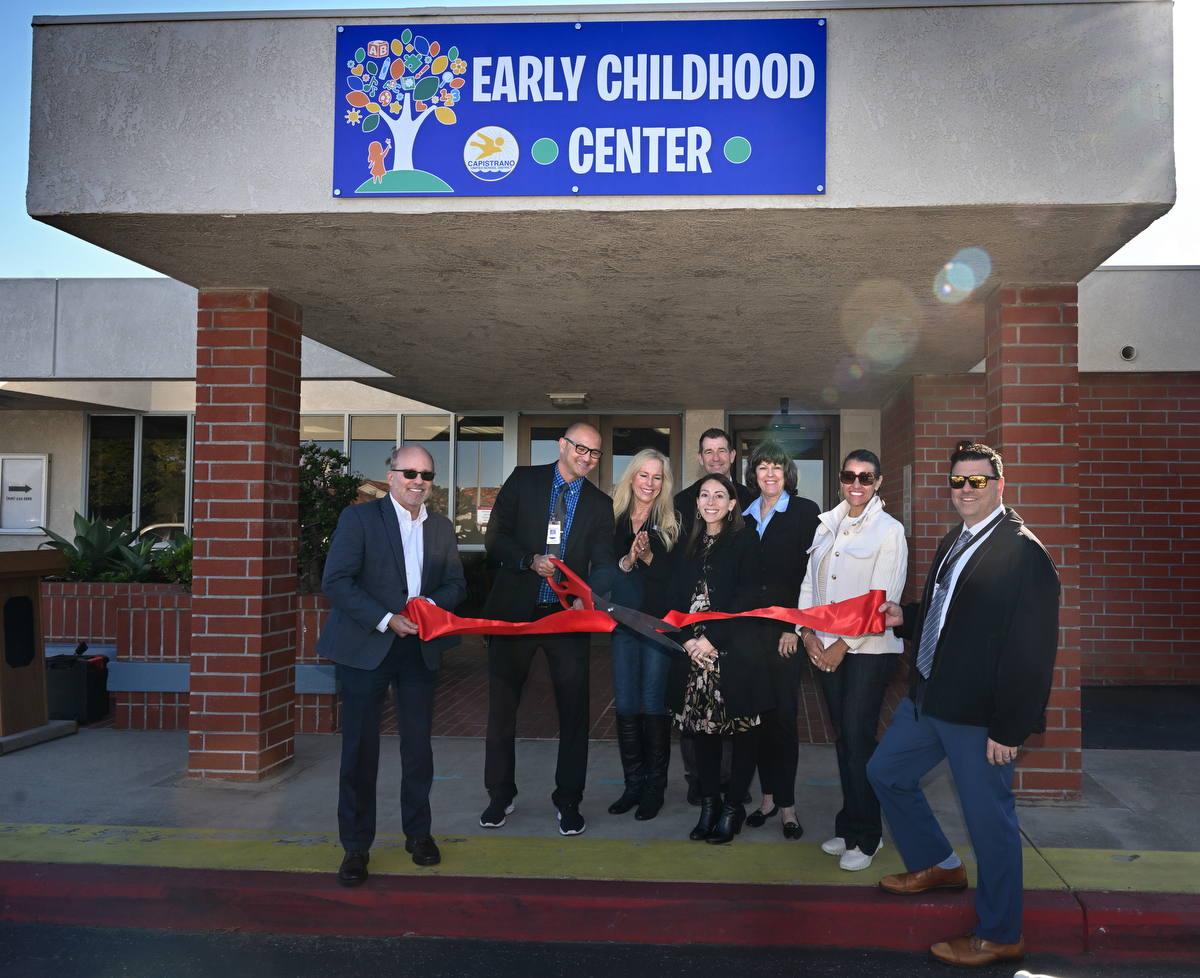
Photo by Steven Georges/CUSD Insider
The group assembled both to celebrate the legacy of the Exceptional Needs Facility and to explore the new and continuing offerings at the Early Childhood Center, which now has all of the District’s early childhood programs for kids ages 0 to 5 under one roof.
Since the original facility opened in three portable units at Crown Elementary, mainstreaming special needs kids into general education has become standard practice. Last year, the Exceptional Needs Facility began the effort of merging some of its classes with Dana Elementary.
That created the opportunity to rethink uses for the Exceptional Needs Facility. Administrators came up with the concept of a community centered around early childhood.
“In early childhood, everyone is focusing on child development and the whole child and different areas of development,” said Lauren Pattullo, Director of Early Childhood, General Education and Special Education Programs for the District. “The Early Childhood Center brings all students closer.”
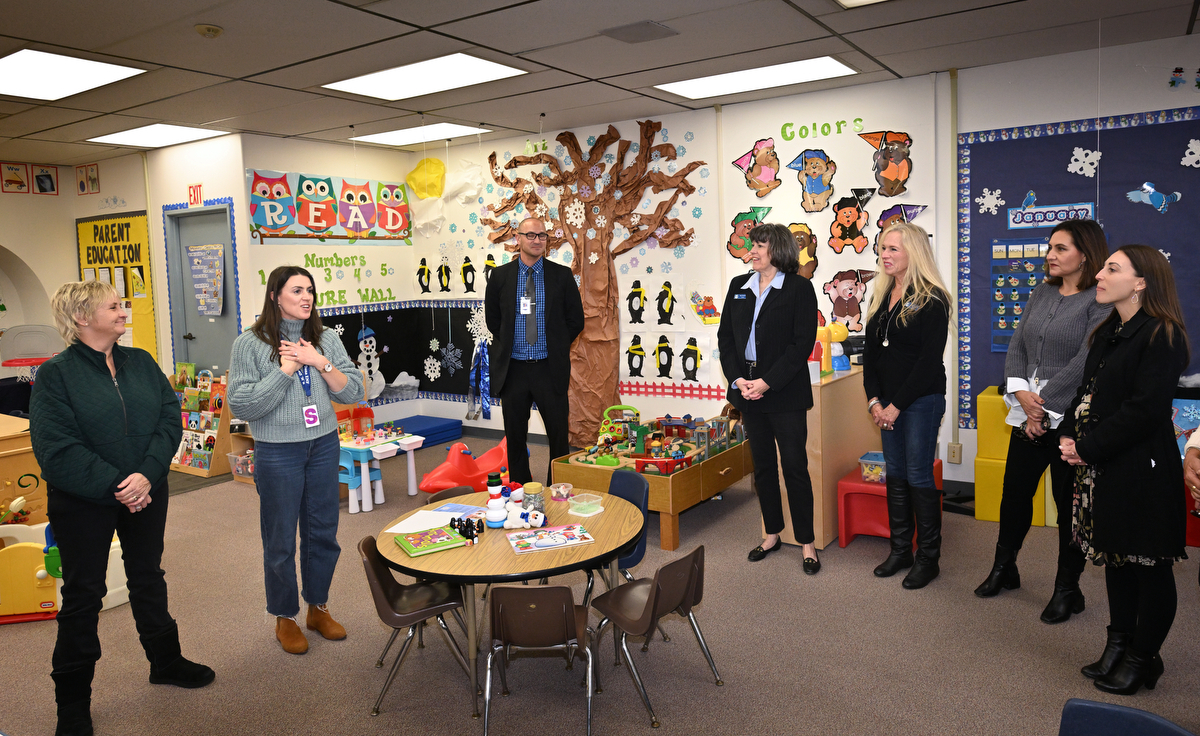
Photo by Steven Georges/CUSD Insider
Although special needs classes continue to be offered at campuses across the district, the Early Childhood Center has it all, not to mention special classes that only the center is equipped to run.
“We have a solid foundation. That is not going to change,” Ellis said. “We’re just going to expand, making it bigger and better.”
The new iteration expands the ability to provide a “more inclusive opportunity for students,” Pattullo said.
New directions
One major development at the Early Childhood Center was bringing together assessment teams to observe children who may have special needs. Special education programs in Capistrano Unified School District are provided for children ages three through 21 who qualify.
The assessment teams, which had previously been located on another campus, are now centered at the Early Childhood Center. In mock preschool settings called Ready, Set, Grow, education specialists meet parents and children to determine whether the kids may benefit from special education.
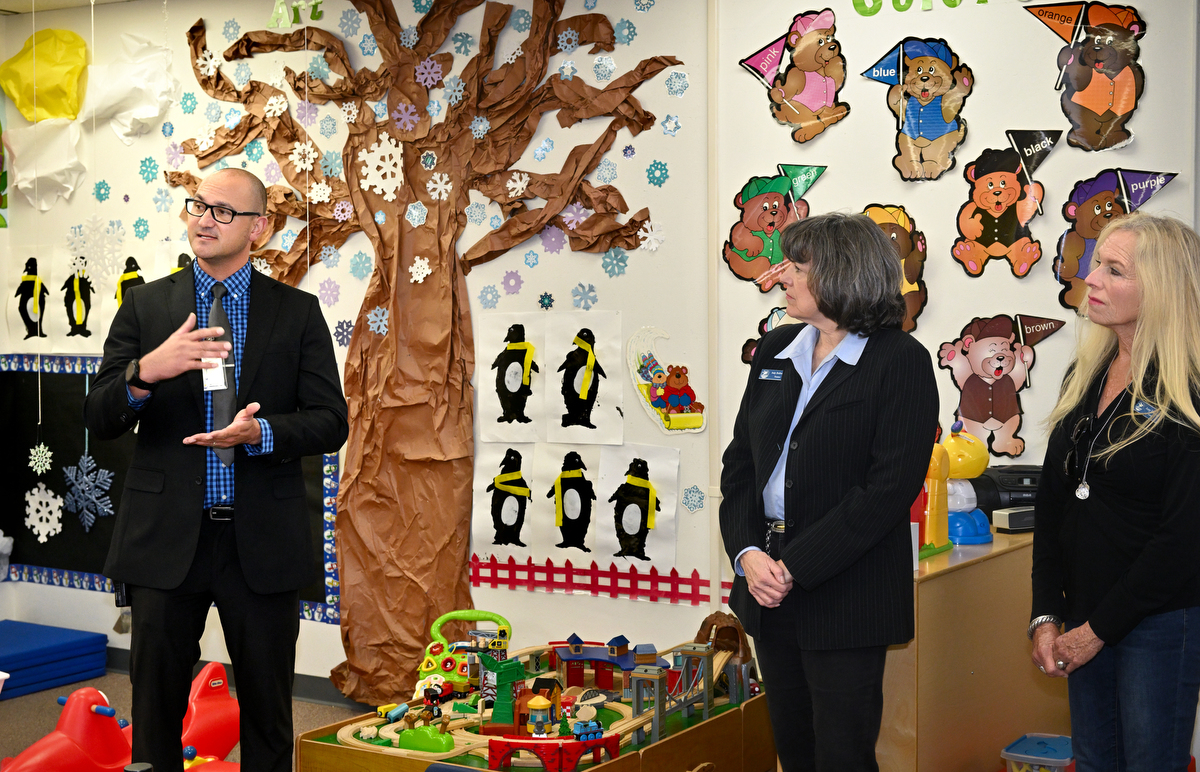
Photo by Steven Georges/CUSD Insider
Because preschool children interact and learn through play, the assessments are held in a fun and engaging setting that helps them develop social-emotional, motor, and pre-academic skills. The new home allows staff members to provide “better diagnostic opportunities to appropriately place kids aged three years and older,” Ellis said.
The primary purpose of the Early Childhood Center continues to be to educate and prepare the very young and severely disabled children for general education opportunities.
The Early Childhood Center has 147 students who vary in communicative abilities, according to Ellis, with a staff and faculty of about 60. The Center has classes for medically fragile students, staffed with registered and licensed vocational nurses. These students are working on functional life skills with the overall goal of becoming more independent in all areas, but require a variety of adapted supports and technology to increase mobility and/or communication.
The Early Childhood Center is one of three schools in the district to offer preschool Structured Autism Classes (SAC), an intensive, highly structured, language-based preschool classroom model that uses Applied Behavioral Analysis to address each child. The SEALS program is also housed here. SEALS is a mild to moderate program that supports students with varying exceptionalities, Pattullo said.
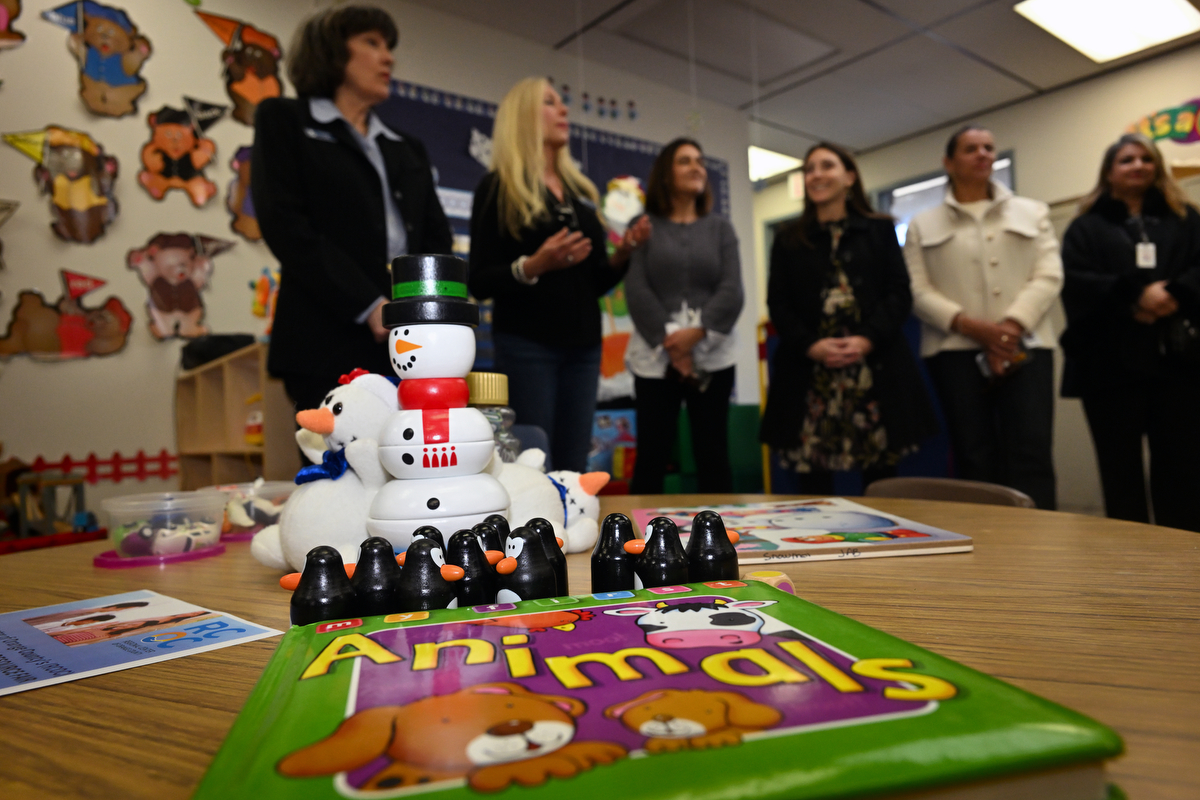
Photo by Steven Georges/CUSD Insider
The Center also offers preschool and transitional kindergarten STEPS classes for children with educational disabilities.
The mission of the Early Childhood Center is to “create an early childhood community with a focus on providing high-quality early childhood programming, while supporting the individual needs of young children and diverse learners, while fostering a place of inclusion and belonging.”
To that end, the Center employs teachers, paraprofessionals, and related service providers. Among their specialties are speech and language, psychology, occupational and physical therapy, adapted physical education, vision, deaf/blind intervention, deaf and hard of hearing, mobility and integration, audiology, and health services.
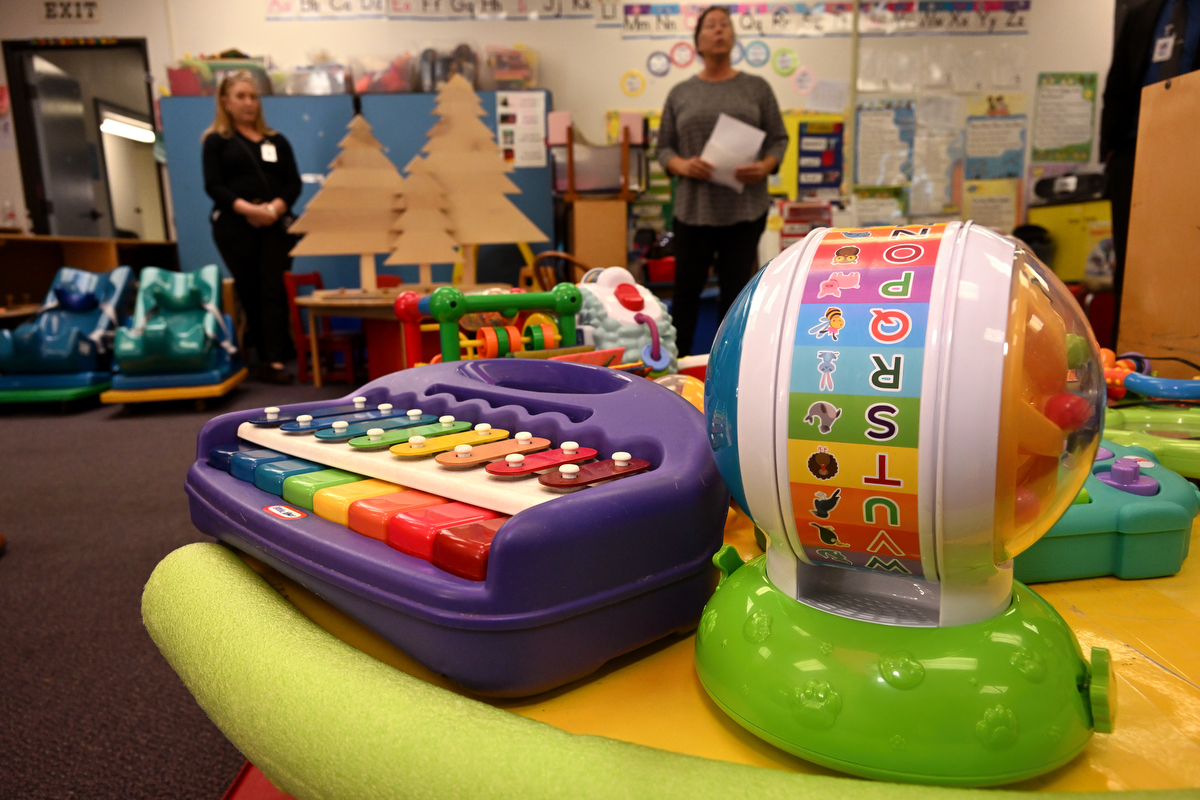
Photo by Steven Georges/CUSD Insider
The Early Childhood Center also is home to the Parent and Me program for infant children until age three, many of whom may be deaf and hard of hearing, or visually or orthopedically impaired.
The staff holds parent education meetings, with child care provided, in which they meet with parents and discuss early childhood education and child-raising topics, according to Shauna Sabet of the Infant/Toddler team.
There is even a preschool Spanish immersion class for general education students.
On a recent afternoon, children in that class cavorted around a playground on the campus, providing a glimpse of the future and the hope of the Early Childhood Center.
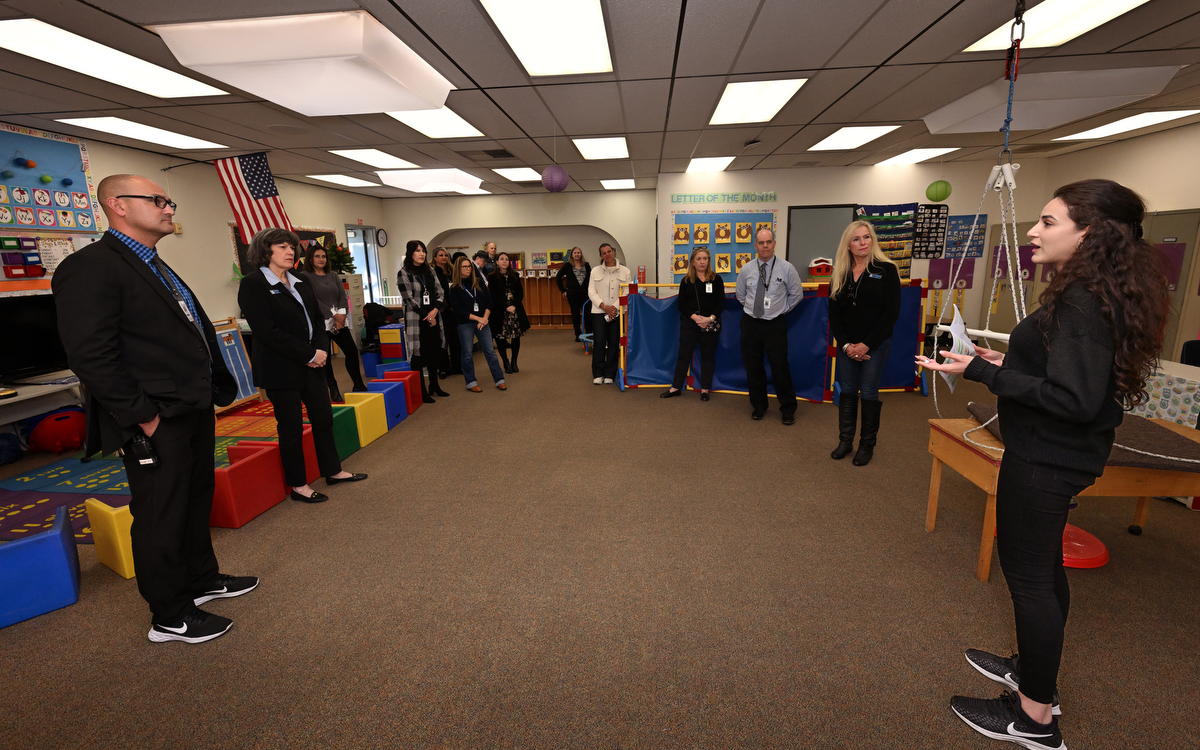
Photo by Steven Georges/CUSD Insider

